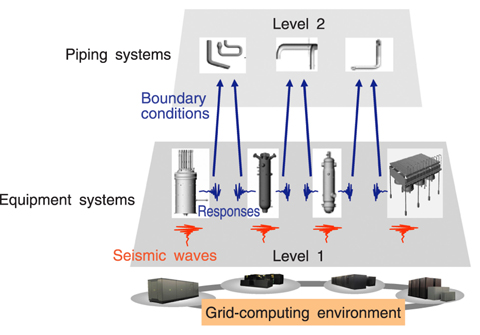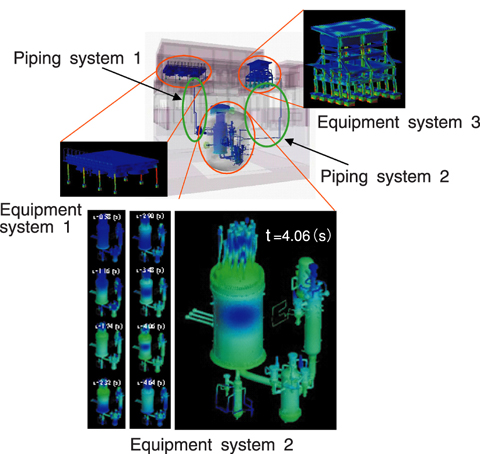
Fig.12-2 Hierarchization in assembly structural analysis by finite element method

Fig.12-3 Vibration analysis of entire nuclear power plant by hierarchization
There is much concern with validation of the structural integrity of nuclear power plants, especially in earthquake-prone nations, due to the recent occurrence of several large earthquakes. In conventional structural design, the equipment and building constituting a plant have been modeled individually in comparatively simple approximations based on past experience and testing. It is, however, required to treat the plant in its entirety and in more detail in order to analyze the structural integrity of the plant consisting of many parts.
The CCSE of JAEA has been conducting studies using a three-dimensional vibration simulation technique to evaluate the structural integrity of nuclear power plants using the latest computational techniques. In the Hanshin-Awaji Earthquake, a recent large-scale earthquake, physical phenomena such as local deformations caused by the interaction between parts were observed which cannot be easily understood by conventional part analysis techniques. We are trying to understand these interactions between parts by using a three-dimensional vibration simulation technique to model and study the entire structure.
Thus far, we have developed a data processing technique called assembly structural analysis method for plants, comprising more than 10 million parts. We have also developed a procedure to model an entire structure using a grid computing approach, because a single supercomputer cannot process the huge data required for modeling. An assembly structural analysis method can be used to generate model data for each part and assemble them in a way similar to how real structures are manufactured into a finished structure; this method is expected to solve the problem presented by huge data. We have developed a prototype of a vibration simulation system by combining these techniques, and began numerical experiments to analyze the structure of the main facilities of the "High Temperature Engineering Test Reactor (HTTR)" at the Oarai Research and Development Center of JAEA. As a first step, we succeeded in performing a static analysis of HTTR.
It is necessary to perform iterative calculations that consider sequential state changes of extremely large components in order to realize vibration analysis of an entire nuclear power plant; this has proved difficult using conventional analytical techniques due to the scale of the problem and the computational time required. Therefore, we proposed a hierarchized assembling structural analysis method to mitigate the problems. In hierarchization, components are classified suitably into units, for example into those serving a common function, and these units are first processed separately. Fig.12-2 shows an example of a nuclear plant system that is classified into two levels, equipment systems and piping systems; the plant is analyzed by considering the interaction between these two levels.
The work of calculation of the structural model with approximately 180 million degrees of freedom was distributed optimally among several supercomputers and was simplified by hierarchizing the input data, as shown in Fig.12-3. We succeeded in conducting a vibration analysis of HTTR, although the model did not include inner structures, using a prototype of a three-dimensional vibration simulation system. Compared with conventional analysis, the data size and processing time were reduced to less than one-third and one-tenth respectively. This result increases the possibility of performing detailed vibration analysis of an entire nuclear power plant having more than 1 billion degrees of freedom.
<Previous: 12 Computational Science and E-Systems Research | Next: 12-2 >